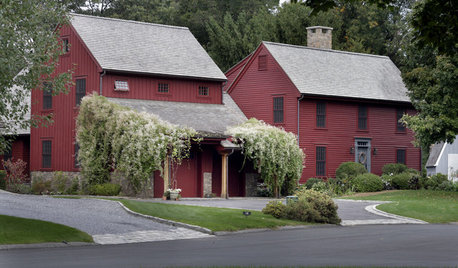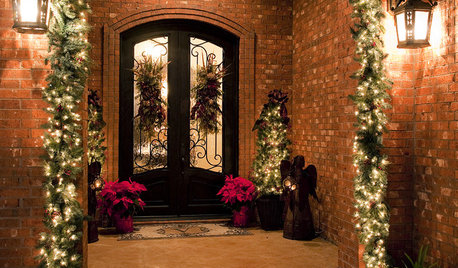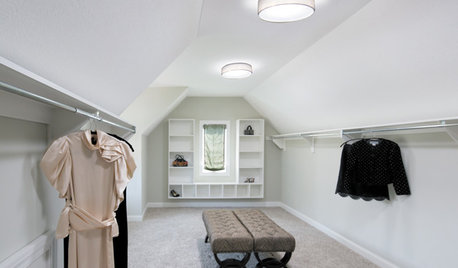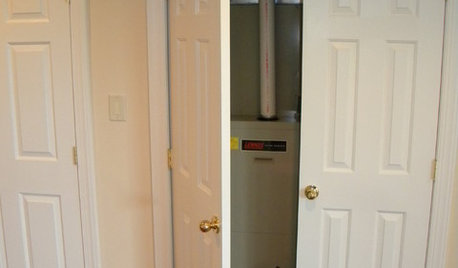Soldered roof flashing gets caulked to brick and shingles, but
threeapples
11 years ago
Related Stories

LANDSCAPE DESIGNHow to Incorporate Your Roofing Into the Landscape
Choose hardscape and plantings that work with your roof’s color, texture, shape and line
Full Story
GREAT HOME PROJECTSReady to Repaint Your Home’s Exterior? Get Project Details Here
Boost curb appeal and prevent underlying damage by patching and repainting your home’s outer layer
Full Story
ARCHITECTUREHave Your Flat Roof and Your Snow Too
Laboring under the delusion that flat roofs are leaky, expensive and a pain to maintain? Find out the truth here
Full Story
MOST POPULARA Contractor's Secrets to Hanging Holiday Decor
Hang a wreath or garland on brick, concrete, Sheetrock or wood the professional way — and avoid the potential pitfalls
Full Story
REMODELING GUIDESThe Hidden Problems in Old Houses
Before snatching up an old home, get to know what you’re in for by understanding the potential horrors that lurk below the surface
Full Story
MOST POPULAR11 Nominees for the ‘She Shed’ Hall of Fame
These special sanctuaries let busy women get away from it all without leaving the backyard
Full Story
ARCHITECTURERoots of Style: Spanish Eclectic Homes Find a Place in the Sun
Flexible stucco, intricate tiles and more have kept this multicultural style going strong for a century
Full Story
CURB APPEALHow to Touch Up Your Home’s Exterior Paint
Protect your siding from weather damage without exposing yourself to mismatched paint by learning the right way to do touch-ups
Full Story
GREAT HOME PROJECTSHow to Add a Skylight or Light Tube
New project for a new year: Increase daylight and maybe even your home’s energy efficiency by opening a room to the sky
Full Story
MOST POPULARA First-Time Buyer’s Guide to Home Maintenance
Take care of these tasks to avoid major home hassles, inefficiencies or unsightliness down the road
Full StoryMore Discussions









renovator8
threeapplesOriginal Author
Related Professionals
River Edge Architects & Building Designers · East Ridge Home Builders · Immokalee Home Builders · Seguin Home Builders · Wilmington Home Builders · Asheboro General Contractors · Clarksville General Contractors · DeSoto General Contractors · Dothan General Contractors · Ewing General Contractors · Leon Valley General Contractors · Meadville General Contractors · Midlothian General Contractors · Renton General Contractors · Saginaw General ContractorsthreeapplesOriginal Author
kirkhall
threeapplesOriginal Author
renovator8
threeapplesOriginal Author
renovator8
kirkhall
threeapplesOriginal Author
sombreuil_mongrel